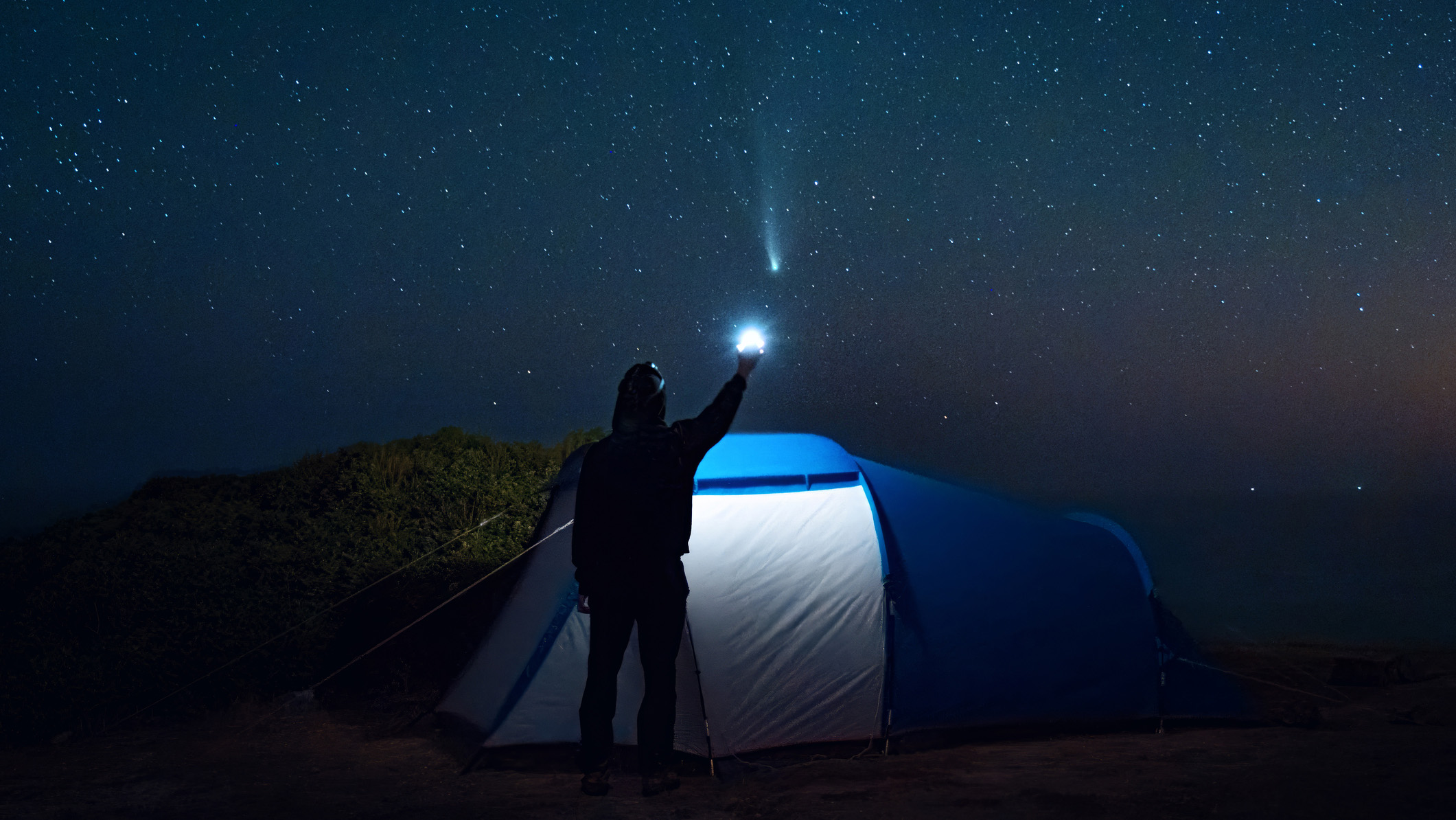
Stargazers and astrophotographers were out in force last week to witness Comet Lemmon (C/2019 U6) scythe across the night sky. The incredible image (above) was captured on October 24 from Spain’s Berguedà region, with the comet nestled perfectly within a dip in the Pedraforca Mountain.
If you haven’t managed to witness this hurtling ball of ice, dust, and gases, it’s already reached its closest proximity to Earth and is now heading away, but there’s still time to see it. Space.com recently quoted the Comet Observation Database (COBS), which estimated the comet’s magnitude of +4.3, which should make it visible to the naked eye from a Dark Sky location. However, the best binoculars will provide a more impressive sight. If you want to view it at its very best, though, you’ll need to turn to one of the best telescopes.
Comet Lemmon is also a fantastic subject for astrophotographers, with BBC Sky at Night Magazine calling it “the best comet [photographically] in a long time.” And indeed, plenty of photographers have been out capturing the comet in all its glory. Social media has been awash with fantastic exposures, like the post from @lremkowicz (below), taken with a Canon EOS R and a Samyang 135mm lens.
A post shared by Łukasz Remkowicz (@lremkowicz)
A photo posted by on
How to photograph a comet
If you want to photograph a comet yourself, you’ll first need to consider where you’re going to photograph it – the darker the area, the better. To find it in the night sky, you can download the Stellarium app or visit the browser-based website. When it comes to kit, it’s possible to capture comets using a camera phone, but the best DSLR or the best mirrorless camera are the most suitable options.
The best lenses for astrophotography tend to be fast, as you’ll want to shoot wide open. When it comes to framing the comet, finding suitable foreground interest will improve the composition, especially if you’re shooting with a wider field of view. You could opt to crop into the comet with a longer lens, but the trade-off here will likely be a narrower maximum aperture.

For a single-image comet shot, you can operate similarly to taking a standard photograph of the night sky. Find the brightest star in the sky and zoom into it via live view, before using manual focus to refine your focus. A big consideration when capturing long exposures of the night sky is light trails caused by the rotation of the Earth. Seasoned astrophotographers may use one of the best star tracker camera mounts to mitigate light trails, but if you don’t have one, you can use the ‘500 rule’ to approximate what shutter speed the stars will begin to trail, taking into account your focal length and your camera’s sensor size.
To calculate the ‘500 rule’, full-frame users simply divide 500 by their given focal length. So, for a 16mm focal length, you’d end up with 31.25, which would mean the stars would start to trail around 31 seconds. If you’re using an APS-C or MFT camera, don’t forget to calculate the equivalent focal length before you apply the ‘500 ruler’. Once you know what shutter speed you’re shooting at, you can dial in your ISO. I tend to start at ISO800 and gradually increase my ISO as needed.
Author: Mike Harris
Source: DigitalCameraWorld
Reviewed By: Editorial Team



